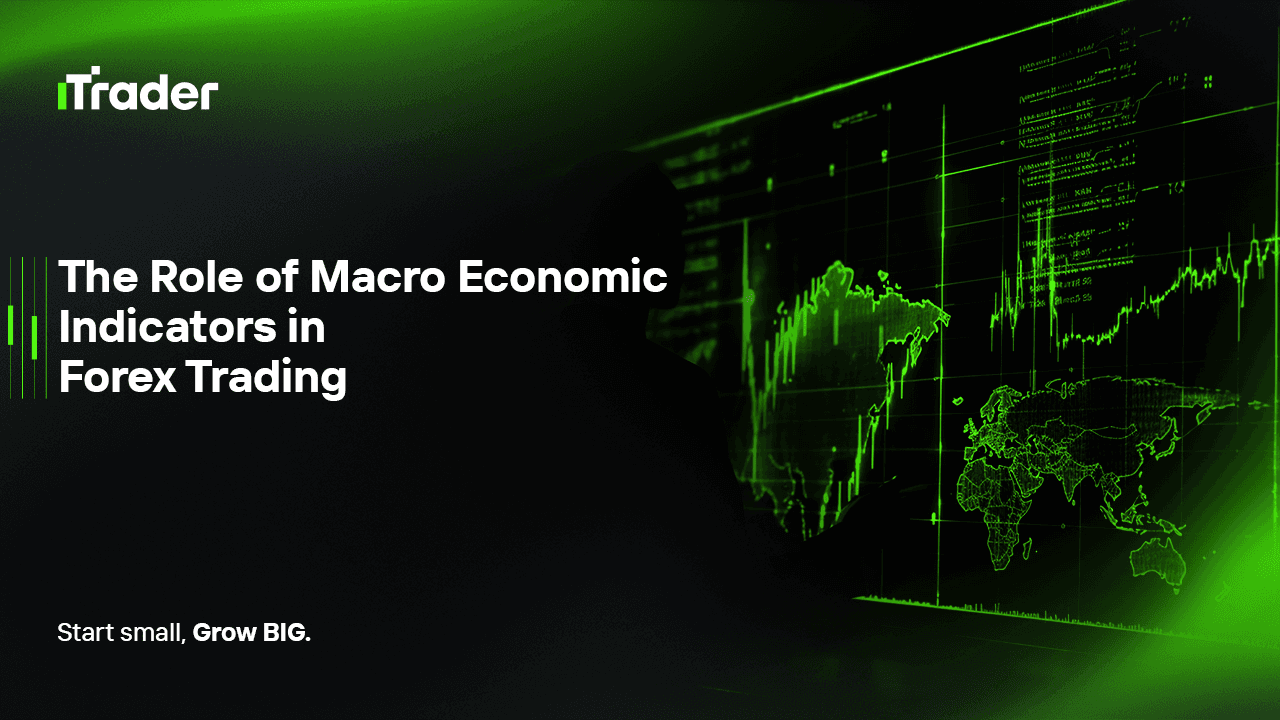2025-08-22
In the world of professional trading, especially for those engaged in prop firm challenges, understanding the forces that drive currency movements goes far beyond technical analysis. While price action, liquidity shifts, and order flow dynamics are crucial in short-term decision-making, the macro backdrop sets the stage upon which these micro-movements unfold. For prop traders who need consistent performance under strict drawdown and risk rules, grasping the relationship between macroeconomic indicators and forex market behavior is not just an academic exercise—it is a survival skill.

Currencies are, at their core, expressions of national economies. The health, stability, and policy direction of an economy shape investor perception, capital flows, and ultimately the valuation of its currency. This means that data points like GDP growth, inflation reports, interest rate decisions, and labor market trends are not simply numbers on an economic calendar; they are signals of structural pressure that shape medium- and long-term trends while also creating short bursts of volatility.
In this article, we will explore how macroeconomic indicators interact with forex markets, with a focus on what prop traders specifically need to extract from them. We will look at key economic data categories, how they impact currency valuations, the interplay with monetary policy, and practical strategies to incorporate macro awareness into a prop trading framework.
Prop firm traders often emphasize risk control, trade frequency, and execution discipline. Yet the majority of their failures are not due to poor entries but rather inadequate adaptation to market regime shifts. These shifts are almost always driven by macroeconomic developments—policy pivots, unexpected data surprises, or global capital rotations.
Ignoring macro means ignoring the root causes of volatility clusters. For example:
For a prop trader bound by strict maximum daily loss and overall drawdown limits, understanding these forces can prevent getting blindsided by volatility that looks “random” on the chart but is fully explainable through the macro lens.
Macroeconomic data releases are not created equal. Some indicators consistently move markets; others provide context without triggering major price shifts. Below are the key categories:
For traders, growth indicators matter because they influence risk appetite and central bank expectations.
Currencies often react violently to inflation surprises, since they directly affect interest rate futures pricing.
Interest rates are the ultimate driver of currency valuation. The expectation of higher yields attracts capital flows. Therefore, central bank meetings, forward guidance, and minutes are often more important than the data itself.
It is not the raw data that moves markets—it is the difference between expectation and outcome. A CPI print of 3.2% might strengthen a currency if consensus was 3.0%, but weaken it if traders had already priced in 3.5%.
This is why prop traders need to track expectations, not just releases. Economic calendars with consensus estimates, as well as tools like OIS curves and bond yield spreads, give critical context.
Another layer is market sentiment and narrative. In some regimes, traders ignore weak data if they believe a central bank is committed to tightening. In other regimes, even small misses can trigger outsized moves. Thus, the same number can have different effects depending on macro context.
One of the biggest advantages of macro awareness is in position sizing and risk allocation. Prop traders don’t need to predict every number, but they must anticipate volatility pockets.
In prop environments where risk per day is capped, managing exposure around macro events is essential for survival.
For prop traders looking to operationalize macro awareness, a simple framework can be:
While individual data releases move markets in the short run, larger macro cycles drive sustained trends. Prop traders who align with these cycles can ride multi-month moves while avoiding contrarian traps.
Key themes include:
Prop traders often focus heavily on technical precision—entry timing, spreads, execution speed. But without a macro compass, these micro-skills are vulnerable to shifts that feel random. In reality, nothing is random when you see the cause-effect chain: data → central bank expectations → capital flows → currency price.
Understanding macroeconomic indicators is not about becoming an economist; it’s about protecting capital, anticipating volatility, and aligning with the market’s dominant forces. For prop traders, it is the difference between surviving challenges and consistently scaling capital allocations.
© 2025 iTrader Global Limited | หมายเลขทะเบียนบริษัท: 15962
iTrader Global Limited ตั้งอยู่ที่ Hamchako, Mutsamudu, เกาะปกครองตนเอง Anjouan, สหภาพคอโมโรส และได้รับใบอนุญาตและอยู่ภายใต้การกำกับดูแลของคณะกรรมการหลักทรัพย์แห่งคอโมโรส ภายใต้หมายเลขใบอนุญาต L15962/ITGL
iTrader Global Limited ดำเนินการภายใต้ชื่อทางการค้า “iTrader” และได้รับอนุญาตให้ดำเนินกิจกรรมการซื้อขายฟอเร็กซ์ โลโก้ เครื่องหมายการค้า และเว็บไซต์ของบริษัทเป็นทรัพย์สินเฉพาะของ iTrader Global Limited
บริษัทย่อยอื่น ๆ ของ iTrader Global Limited ได้แก่ iTrader Global Pty Ltd หมายเลขทะเบียนบริษัทออสเตรเลีย (ACN): 686 857 198 โดยบริษัทนี้เป็นตัวแทนที่ได้รับอนุญาต (หมายเลขตัวแทนบริการทางการเงินของออสเตรเลีย (AFS): 001315037) ของ Opheleo Holdings Pty Ltd (ใบอนุญาตบริการทางการเงินของออสเตรเลีย (AFSL): 000224485) ซึ่งมีที่อยู่จดทะเบียนอยู่ที่ Level 1, 256 Rundle St, Adelaide, SA 5000 ข้อจำกัดความรับผิดชอบ: นิติบุคคลนี้ไม่ใช่ผู้ออก และไม่รับผิดชอบต่อผลิตภัณฑ์ทางการเงินที่ซื้อขายบนหรือผ่านเว็บไซต์นี้
คำเตือนความเสี่ยง: การซื้อขาย CFD มีความเสี่ยงสูงต่อการสูญเสียเงินทุนอย่างรวดเร็วเนื่องจากเลเวอเรจ และอาจไม่เหมาะสมกับผู้ใช้ทุกคน
การซื้อขายกองทุน CFD และผลิตภัณฑ์ที่มีเลเวอเรจสูงอื่น ๆ ต้องการความรู้เฉพาะทาง
จากผลการวิจัยพบว่า 84.01% ของผู้เทรดที่ใช้เลเวอเรจประสบกับการขาดทุน
โปรดตรวจสอบให้แน่ใจว่าคุณเข้าใจความเสี่ยงทั้งหมด และพร้อมที่จะสูญเสียเงินทุนก่อนที่คุณจะเข้าร่วมการซื้อขายที่มีเลเวอเรจ
iTrader ขอประกาศว่า บริษัทจะไม่รับผิดชอบต่อความเสี่ยง ความเสียหาย หรือการสูญเสียใด ๆ ที่เกิดขึ้นจากการซื้อขายแบบมีเลเวอเรจต่อบุคคลหรือนิติบุคคลใด ๆ ทั้งสิ้น
ข่าวสารและข้อมูลที่ปรากฏบนเว็บไซต์นี้มีไว้เพื่อวัตถุประสงค์ทางการศึกษาเท่านั้น ผู้ใช้ควรตัดสินใจทางการเงินอย่างอิสระและโดยใช้ข้อมูลอย่างรอบคอบ
ข้อจำกัด: iTrader ไม่ได้มุ่งเป้าเว็บไซต์หรือบริการไปยังผู้อยู่อาศัยในประเทศที่กฎหมายหรือข้อบังคับห้ามไม่ให้มีการทำธุรกรรมดังกล่าว
หากคุณอาศัยอยู่ในเขตอำนาจที่การใช้เว็บไซต์หรือบริการนี้ถูกจำกัด คุณต้องรับผิดชอบในการปฏิบัติตามกฎหมายท้องถิ่น
iTrader ไม่รับประกันว่าเนื้อหาบนเว็บไซต์ของบริษัทจะเหมาะสมหรือถูกต้องตามกฎหมายในทุกพื้นที่